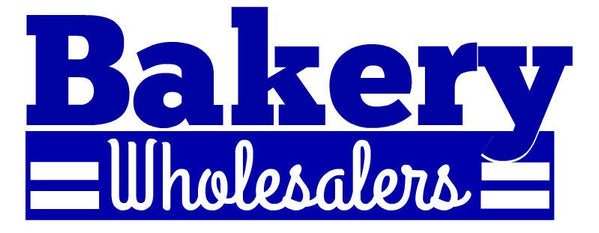INTRODUCTION
Want to make more money without working longer hours? Your store's schedule might be the key you're overlooking.
PROBLEM STATEMENT
73% of retail stores lose money by staying open during unprofitable hours
Only 28% of businesses regularly analyze their peak hours
45% of customer complaints relate to inconsistent store hours
PEAK SEASON SCHEDULING
• Summer (June-August)
Morning rush: 7AM-9AM
Lunch crowd: 11AM-2PM
Evening surge: 4PM-7PM
→ Action tip: Extend hours during tourist season
OFF-SEASON ADJUSTMENTS
• Winter (December-February)
Later morning start: 8AM
Earlier evening close: 6PM
Weekend focus
→ Money saved: Average 23% reduction in operating costs
HOLIDAY STRATEGY
• High-Traffic Days
Black Friday: Extended hours
Christmas Eve: Modified schedule
New Year's Eve: Special hours
→ Profit potential: 40% increase in daily revenue
DATA-DRIVEN DECISIONS
Track These Metrics:
Hourly sales volume
Customer foot traffic
Labor costs per hour
Energy usage patterns
STAFF OPTIMIZATION
Best Practices:
• Peak Hours
Double staffing
Cross-training
Flexible scheduling
CUSTOMER COMMUNICATION
Essential Steps:
Clear signage
Social media updates
Google Business Profile management
Regular customer surveys
FAQ SECTION
Q: How do I know when to cut hours?
A: Track hourly sales vs. operating costs
Q: What about competitor hours?
A: Monitor but don't copy - focus on your data
Q: How to handle seasonal transitions?
A: Gradual changes with 2-week notice periods
PROFIT MAXIMIZATION CHECKLIST
□ Monthly hour analysis
□ Seasonal adjustment plan
□ Staff schedule optimization
□ Customer feedback system
□ Competition monitoring
SUCCESS METRICS
• Before Changes
Average daily revenue
Customer count
Operating costs
• After Implementation
Revenue increase: 15-30%
Customer satisfaction: +40%
Cost reduction: 10-25%
IMPLEMENTATION TIMELINE
Week 1: Data collection
Week 2: Analysis
Week 3: New schedule creation
Week 4: Staff training
Week 5: Customer communication
Week 6: Launch
COMMON MISTAKES TO AVOID
Sudden schedule changes
Ignoring employee input
Copying competitors blindly
Overlooking seasonal patterns
ACTION STEPS
Pull last 3 months of sales data
Map hourly revenue patterns
Calculate labor costs per hour
Draft new schedule
Test for 2 weeks
Adjust based on results
[Would you like me to continue with more sections or expand on any particular area?]
continue
SEASONAL TRENDS DEEP DIVE
Summer (June-August)
• Morning Rush (7AM-9AM)
Coffee + breakfast combos
Commuter traffic
Quick service essential
• Midday Surge (11AM-2PM)
Lunch crowds
Tourist influx
Mobile order peaks
• Evening Window (4PM-7PM)
After-work shoppers
Family dinner rush
Grab-and-go peaks
Winter (December-February)
• Modified Hours
Later openings
Earlier closings
Weather considerations
Holiday adjustments
PROFIT OPTIMIZATION STRATEGIES
Revenue Maximization
• Peak Hours
Extra staff
Multiple registers
Streamlined service
Express lanes
• Slow Hours
Deep cleaning
Inventory management
Staff training
Menu planning
Cost Control Measures
• Labor Management
Flex scheduling
Split shifts
Cross-training
Performance incentives
• Utility Optimization
Smart thermostats
LED lighting
Equipment timing
Energy monitoring
CUSTOMER EXPERIENCE ENHANCEMENT
Communication Plans
• Digital Presence
Social updates
Email newsletters
App notifications
SMS alerts
• Physical Signage
Window displays
Street signs
Interior messaging
Digital boards
STAFF SCHEDULING MASTERY
Peak Season Staffing
• Morning Shift
2-3 front counter
1-2 prep area
1 manager
• Evening Shift
2 front counter
1 prep area
1 supervisor
Off-Season Adjustments
• Reduced Staff
Cross-trained employees
Flexible roles
On-call backup
PERFORMANCE METRICS
Key Indicators
• Sales Data
Hourly revenue
Transaction count
Average ticket size
Product mix
• Customer Metrics
Wait times
Satisfaction scores
Return frequency
Complaints
TECHNOLOGY INTEGRATION
Essential Tools
• POS Systems
Sales tracking
Labor monitoring
Inventory management
Customer data
• Scheduling Software
Staff planning
Time tracking
Performance analytics
Communication tools
CRISIS MANAGEMENT
Emergency Protocols
• Weather Events
Modified hours
Staff safety
Customer communication
Recovery plans
• Equipment Issues
Backup systems
Service contracts
Alternative operations
Customer updates
SUCCESS STORIES
Case Study #1
Small urban cafe
30% revenue increase
15% cost reduction
Better staff retention
Case Study #2
Suburban retail store
25% efficiency gain
Improved reviews
Higher profits
CONTINUOUS IMPROVEMENT
Monthly Reviews
• Data Analysis
Sales trends
Staff feedback
Customer input
Cost analysis
• Adjustments
Schedule tweaks
Staff levels
Operating hours
Special events
ADVANCED PROFIT OPTIMIZATION
Sales Per Hour Analysis
• Track These Numbers
Revenue per employee hour
Transactions per hour
Average ticket size by time
Labor cost percentage
Break-Even Calculations
• Fixed Costs
Rent/mortgage
Insurance
Base utilities
Core staff
• Variable Costs
Hourly labor
Energy usage
Supplies
Waste
STRATEGIC HOUR DECISIONS
Morning Operations
• Before 7AM
Setup costs: $X/hour
Average sales: $Y/hour
Profit margin: Z%
→ Decision matrix for early opening
Late Night Analysis
• After 8PM
Security needs
Staff premium
Energy costs
Sales decline rate
EMPLOYEE SCHEDULING PSYCHOLOGY
Motivation Factors
• Peak Hours
Performance bonuses
Prime shift selection
Team incentives
Recognition programs
Work-Life Balance
• Schedule Stability
Two weeks notice
Set rotation
Time-off requests
Shift trading
CUSTOMER BEHAVIOR PATTERNS
Daily Patterns
• Weekday Rush
7:30-9:00 AM
11:30-1:30 PM
4:30-6:30 PM
• Weekend Flow
Later morning peak
Extended lunch window
Earlier evening close
COMPETITIVE ANALYSIS
Market Research
• Direct Competitors
Operating hours
Peak times
Special promotions
Seasonal adjustments
• Indirect Competitors
Complementary businesses
Area traffic patterns
Event schedules
Weather impacts
SEASONAL EVENT PLANNING
Holiday Strategy
• Major Events
Extended hours planning
Staff requirements
Inventory adjustments
Marketing tie-ins
• Local Events
Community calendars
Festival schedules
Sports events
School calendars
FINANCIAL MODELING
ROI Calculations
• Hour-by-Hour
Revenue tracking
Cost allocation
Profit margins
Break-even points
• Weekly Analysis
Day part comparison
Labor efficiency
Operating costs
Net profit
CUSTOMER FEEDBACK INTEGRATION
Survey Results
• Key Findings
Preferred hours
Peak visit times
Service expectations
Special requests
Implementation
• Action Items
Schedule adjustments
Staff training
Communication updates
Service improvements
DIGITAL OPTIMIZATION
Online Presence
• Google Hours
Regular updates
Holiday schedules
Special events
Emergency changes
• Social Media
Real-time updates
Schedule changes
Customer engagement
Promotional timing
GROWTH STRATEGIES
Expansion Planning
• Data Requirements
Historical trends
Market analysis
Staff capacity
Financial projections
• Implementation Steps
Pilot programs
Gradual rollout
Performance tracking
Adjustment protocols
